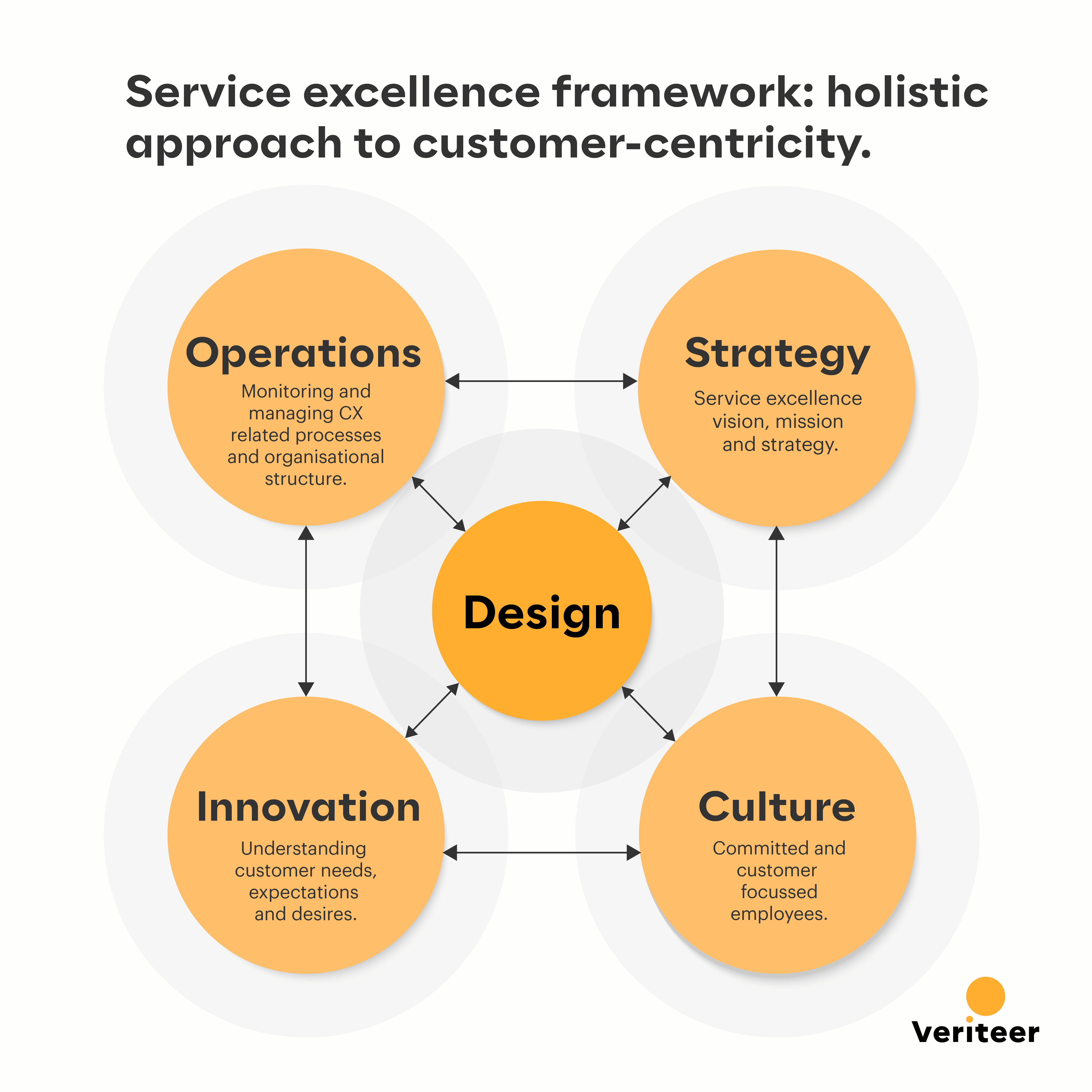Thought Leadership
How to live & breathe customer-centricity
How to live & breathe customer-centricity: A holistic service excellence framework
'Customer-centricity' is a frequently heard term. But do we truly understand what it means? And, more fundamentally, do we genuinely understand the concept of a 'customer' and their identity?"
Let’s figure it out together.
First, let's get down to the fundamentals: users, consumers, customers... "Why have so many synonyms?", you may wonder. But despite these terms being used interchangeably, they stand for slightly different things:
Consumer: These are the ones who actually use or consume the product or service. Imagine your fluffy Labrador happily munching on a bowl of Pedigree.
User: These folks are also using the product or service, and it's pretty much a synonym for 'consumer.' Although some reserve it for digital-format products, it's like the Labrador continuing to enjoy his favourite treats.
Customer: Now, here's where it gets interesting. Customers not only consume or use the products but also include everyone else who interacts with the brand. Picture the fluffy Labrador's owner—both the Labrador and the owner are customers.
So, 'customer' is like the umbrella term that covers 'consumer' too, just as every square is a rectangle but not every rectangle is a square, right?
Now, in today's world, having a good product won't make customers bark with excitement. What sets you apart is the experience you provide. High customer satisfaction and enthusiasm are no longer optional luxuries; they're essential. That's where the Service Excellence framework, developed by J.P. Thomassen comes into play.

In a world where it's all about going beyond the product itself and delivering an exceptional experience, Service Excellence helps organisations shift the conversation about customer satisfaction beyond customer-facing roles and infuse it into every nook and cranny of the business. It's the secret sauce to truly becoming customer-centric, whether you're catering to Labradors, their owners, or anyone else in between.
The framework splits the approach to customer-centricity into 5 dimensions:
-
Design
At the core of the model and the foundation for the following dimensions is the Design stage. It encourages organisations to adopt an outside-in approach, building products and services based on consumer needs and expectations. Even better, it advocates co-creation! Here, it's not just users but also employees and other stakeholders, like partners, who can contribute to defining the ideal customer experience. Alongside designing CX, it's crucial to document it and establish standards and guidelines. This ensures that the organisation lives and breathes customer journeys and service guarantees, forming the bedrock for future operations.
-
Strategy
Once an organisation has defined the ideal CX, it should integrate it into the company's vision, mission, and strategy. The CX vision, in addition to other organisational purposes, should focus on creating a meaningful impact in consumers' lives. The mission and strategy then drive the business toward achieving this vision. Similar to the Design dimension, it's imperative to communicate the vision and strategy to all relevant stakeholders, as their contribution is the key to success.
Leadership commitment is another crucial aspect in the Strategy dimension. Leaders are responsible for optimising resources and streamlining processes for CX delivery. More importantly, they should serve as motivators and support employees. The framework's authors emphasise a structured approach, setting clear objectives for individuals while allowing room for autonomy.
-
Culture
Any discussion of culture and cultural fit, of course, starts with recruitment. To further foster customer-centricity, organisations should carefully select like-minded employees and their behaviours should embody the company’s values. Regardless of how customer-oriented the new employee is, conducting training and L&D activities would bring better alignment with the organisational vision of the ideal CX.
In everyday work, culture means translating those organisational values into behaviours and correct management styles that would impact group dynamics and foster cooperation. Authors suggest leaders should find a golden middle between having employees follow procedures and providing empowerment for autonomic decisions. Such initiative behaviours should be recognised, alongside frequent feedback opportunities.
-
Operations
The operational dimension looks into leveraging recourses, processes, technologies, organisational structures and partnerships. The latter should be thoughtfully considered, as oftentimes its company partners who partly deliver experience to the customers, hence shall strongly align on a defined customer-centric philosophy.
-
Innovations
The final dimension investigates how organisations can stay at the forefront. In the Service Excellence framework, customer research is synonymous with innovation, focusing on understanding consumer needs, desires, expectations, emotions, behaviours, experiences, and satisfaction. It also underscores the importance of data acquisition and usage. From a leadership perspective, managers should ensure that employees embrace a continuous improvement philosophy, fostering creativity across the entire organisation.
Embracing these dimensions leads to better service performance, customer satisfaction, improved financial results, and a more enthusiastic team. So, as you reflect on your own organisation, ask yourself, are you truly living and breathing customer-centricity? Are you going beyond the products to craft exceptional experiences? And most importantly, are you ready to make it an integral part of your business's identity?
Author: Inna Shabardina
Expertise: Strategy, CX, Service Design
Connect: LinkedIn |
If you liked this article, why not check out:
1. Customer-centric operating model - Keeping the customer at the heart
2. Beyond transformation
